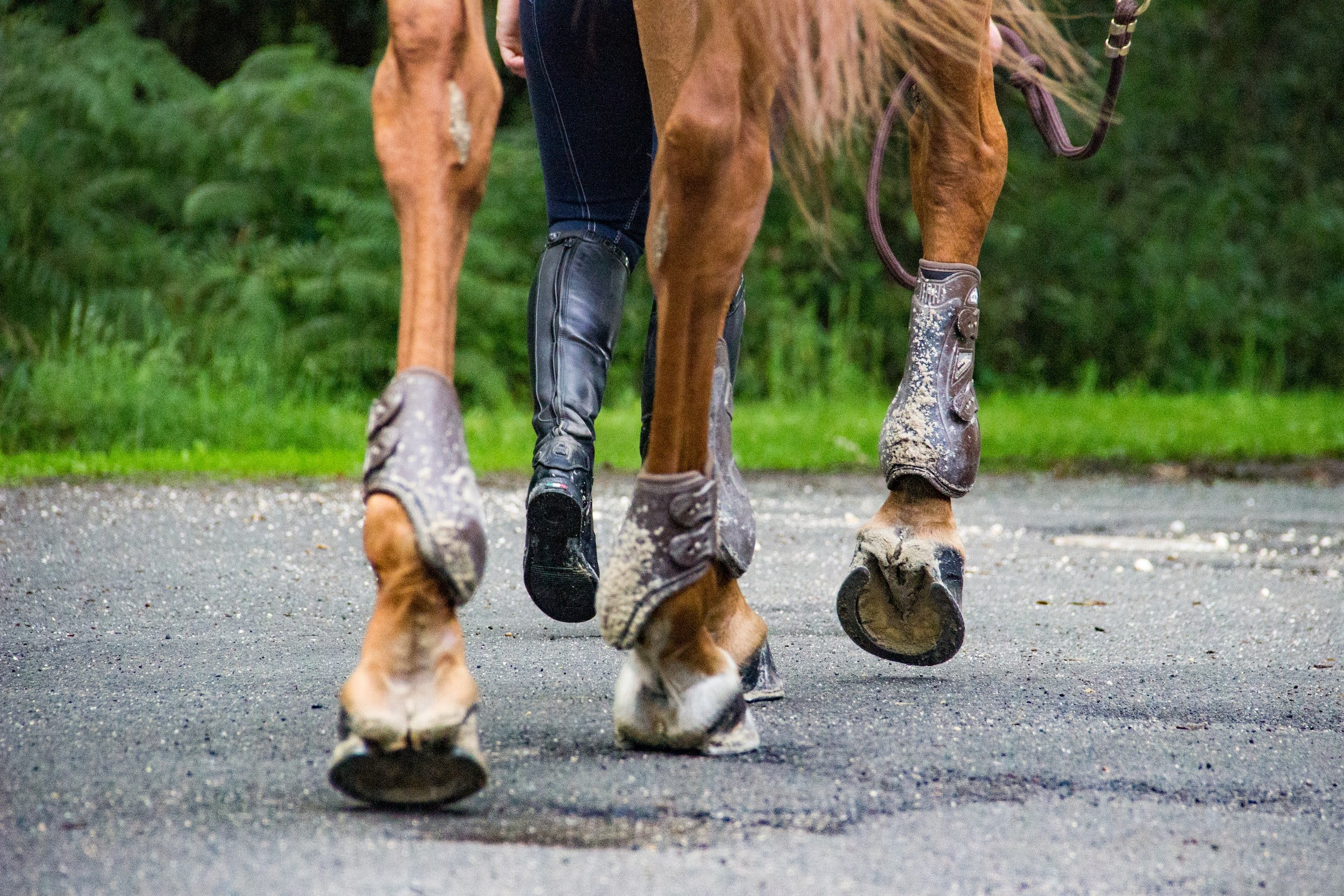Research on Metal Shoes
This post will be continuously updated with more information & resources.
As with mostly everything in our modern world, innovation is improving traditional practices. More efficient & healthier options are appearing. The farrier world & equine hoof industry is included in this and is rapidly changing as a slow growing number of scientists, veterinarians, professionals & owners are realizing that nutrition and proper movement have a lot to do with keeping horses comfortable in their feet. In addition to this, a revolution has taken place in an effort to improve the protection options for horses hooves. We now have hoof boots, glue-on and composite shoe options that can be used for both long-term, rehabilitative, or temporary use!
And last but not least - research is showing that metal shoes are having an impact on our horses long term hoof health and overall wellness.
Sure, many horses can live in metal shoes their entire lives and seemingly have no reported problems or issues. Others may begin to show us the impacts of long-term metal shoe wearing - whether it be in their feet, or their bodies.
Most of the time, we may not even realize that discomfort in the hooves is the root cause of other issues - as they are often slow to develop, and not an immediate result of shoe wearing but rather a slow, degenerative, one.
These issues could manifest in the feet as navicular issues or in the body as osteo-arthritis, lower leg injuries, strained tendons, or something else.
If your horse is uncomfortable in their feet, they are likely uncomfortable in their body. Often, we are dealing with a chicken and egg situation here too. Body issues can contribute to hoof issues.
Do you see the distortions in these hooves?
Thanks to this article by Scoot Boots, we are able to decipher some of the key takeaways from a very recent & comprehensive study by The Swedish Agricultural University (SLU) and Agria Animal Insurance. This research includes feedback from Olympic Gold medalist and world number one in showjumping, Peder Fredricson, showing and confirming negative effects of metal horse shoes.
The key points from the study are summarized below, with additional findings by other researchers, including Dr. Bowker and other professional hoof care providers.
effects of metal shoes…
-Concussion
Iron shoes create a larger force of concussion in the hoof, lower limb and beyond
Follow this link to see slow motion videos at 4000 frames per second displaying the differences in concussion between barefoot, composite and metal shoes.
-Blood Flow
Metal shoes lead to an interruption of the blood supply to the hooves
See Dr. Bowkers Hemodynamic Flow Theory/Study
& Expansion and Contraction Notes
-contraction & expansion
When a horse moves, the hoof is going through constant expansion and contraction every time it takes a step. Loading expands the hoof, lifting contracts the hoof. We apply shoes while the hoof is lifted and in a state of contraction.
Metal shoes inhibit the hooves natural ability to contract and expand
“The iron shoe locks the so-called hoof mechanism especially when landing after obstacles. The shod hoof can’t expand or contract as much as the barefoot hoof because the shoe inhibits lateral movement. It could mean that the blood flow in the shod hooves is inhibited, and this blood flow is important for the hooves to be healthy,” Roepstorff explained to Agria Djurförsäkring.
-Reduced Proprioception
With the combination of reduced blood flow, reduced expansion, and reduced feeling in the foot, proprioception is limited. This means that the horse has less awareness of where the hoof is and is landing.
Barefoot horses have increased awareness of foot placement.
A horse more aware of its landings is able to reduce its chance injuries and lameness.
“Horses with shoes can go for a long time with an injury before it is noticed that it is lame.” - Peder
-Peripheral Loading
Peripheral loading is a term that describes how the hoof is loaded peripherally. In further detail, the edge of the hoof, or rim of the hoof wall that makes contact with the ground, becomes the primary weight bearing surface. Many believe that while the wall does take the brunt of loading, the other structures (sole, bars, frog, heels) should be able to share some of the load. With shoes that do not contain any frog or heel support, the peripheral loading is amplified as the other structures of the hoof are lifted away from the ground. This creates excessive leverage and force on the hoof wall.
-GREATER risk of caudal failure
With the hoof wall higher than everything else, the frog often stays lifted above the ground. This often limits frog stimulation, especially if the horse is still landing toe-first, regardless of the shoes. If you don’t use it, you loose it! The frog directly impacts the caudal (heel) portion of the hoof and the digital cushion. Without stimulation, frogs are prone to atrophy, and central sulcus thrush. When this combination of atrophy continues on, the heels will often begin to contract.
-contracted heels
You can see in this photo that the line stemming from the frog is reaching up between the heel bulbs. When the central sulcus of the frog area is affected by thrush, it can turn into a deep seated infection. When the heels start to close in on one another, they are becoming contracted. The two issues often go hand in hand if left untreated. Contracted heels are a real problem and is incredibly painful, they need to be unfolded very carefully over time. The slit between the heels is prone to deep thrush that should only be treated with safe topical products.
The heels may begin to collapse (prolapse). The heel base may begin to run forward. Or the angles of the hoof may become skewed. Pads and wedges offer a temporary bandage but can cause just as many issues themselves.












